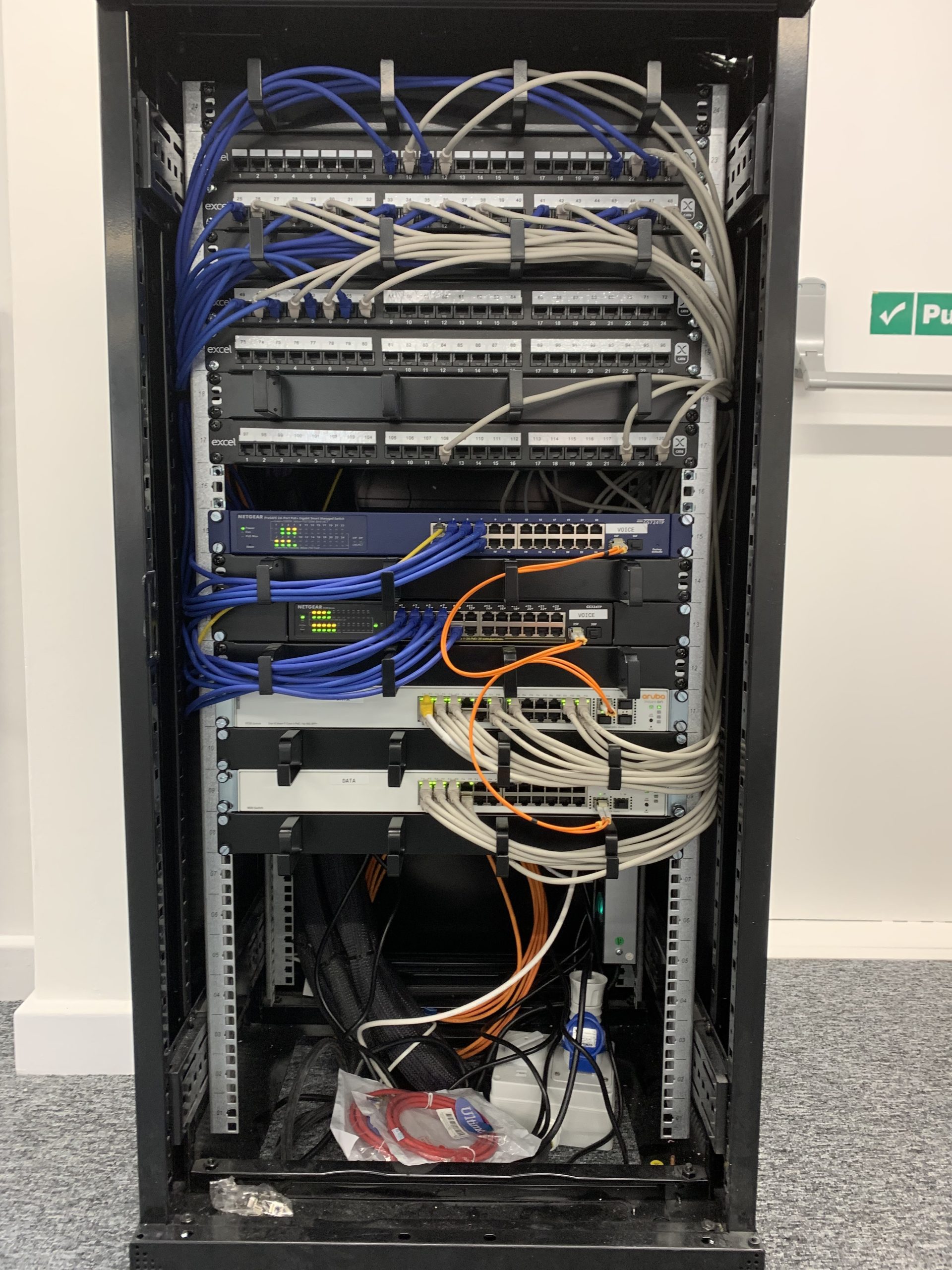In today’s tech-driven world, a well-organised network infrastructure is no longer a luxury – it’s a necessity. Whether you’re managing a sprawling data centre or a home office hub, taming the cable jungle is crucial for efficient operation, optimal performance, and future scalability. Enter the dynamic duo of **patch panels and racks**: your knights in shining armour against cable clutter.
**What are Patch Panels and Racks?**
**Patch panels** serve as centralised connection points for network cables. Imagine them as multi-port outlets, neatly organising incoming and outgoing lines. They typically mount within **racks**, sturdy metal frames designed to house various IT equipment like switches, routers, and servers.
**Why Consider Patch Panel and Rack Installation?**
The benefits of a professionally installed patch panel and rack system are numerous:
* **Enhanced organisation:** Patch panels eliminate the spaghetti junction of loose cables, promoting a clean and professional appearance.
* **Improved accessibility:** All connections are readily accessible in one central location, simplifying troubleshooting and maintenance.
* **Increased efficiency:** Patch cables between the panel and equipment offer easier reconfiguration and expansion than hardwired connections.
* **Optimised performance:** Proper cable management minimises signal interference and ensures optimal network speed and reliability.
* **Future-proofed scalability:** Racks accommodate additional equipment, allowing your network to grow without messy rewiring.
**Planning Your Patch Panel and Rack Installation:**
Before embarking on your cable-taming quest, careful planning is key:
* **Assess your needs:** Determine the number of network ports required, equipment types, and rack size based on your current and future needs.
* **Choose the right equipment:** Select patch panels and racks compatible with your existing infrastructure and cable types (e.g., Cat5e, Cat6).
* **Consider cable management:** Plan cable routing paths within the rack and utilise tools like cable ties and organisers for a clean and efficient layout.
* **Seek professional help:** If unsure, engage a certified IT professional for optimal installation and safety concerns.
**Installing Your Patch Panel and Rack System:**
Professional installation is always recommended, but for the tech-savvy, here’s a simplified overview:
1. **Mount the rack:** Secure the rack to a sturdy wall or floor, ensuring proper grounding and ventilation.
2. **Install the patch panel:** Mount the panel within the rack at a convenient height, making sure ports are easily accessible.
3. **Terminate cables:** Crimp RJ-45 connectors onto your network cables (or use pre-terminated options) following industry standards.
4. **Connect cables:** Patch cables connect ports on the panel to corresponding equipment ports. Label each cable for easy identification.
5. **Test and tidy:** Verify all connections are secure and functional. Utilise cable management tools to maintain a clean and organised rack interior.
**Conclusion:**
By mastering the art of patch panel and rack installation, you’ll not only conquer cable chaos but also pave the way for a streamlined, efficient, and future-proof network infrastructure. So, ditch the tangled mess and embrace the structured beauty of organised cables – your network (and your sanity) will thank you.
**Tags:** patch panel, rack installation, network cabling, cable management, data centre, network infrastructure, IT solutions, network efficiency, scalability
**Word count:** 498



Leave A Comment